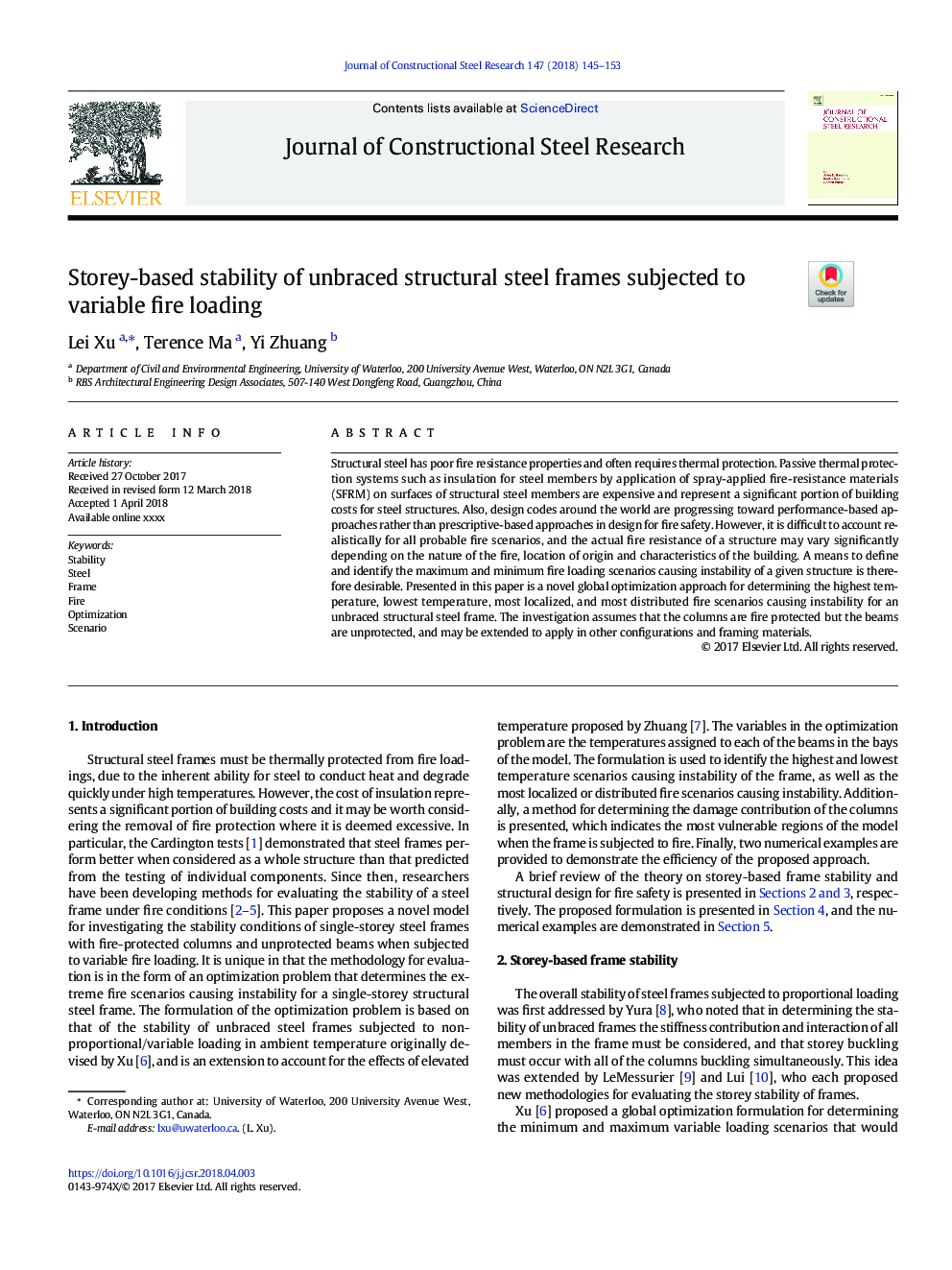| Article ID | Journal | Published Year | Pages | File Type |
|---|---|---|---|---|
| 6750431 | Journal of Constructional Steel Research | 2018 | 9 Pages |
Abstract
Structural steel has poor fire resistance properties and often requires thermal protection. Passive thermal protection systems such as insulation for steel members by application of spray-applied fire-resistance materials (SFRM) on surfaces of structural steel members are expensive and represent a significant portion of building costs for steel structures. Also, design codes around the world are progressing toward performance-based approaches rather than prescriptive-based approaches in design for fire safety. However, it is difficult to account realistically for all probable fire scenarios, and the actual fire resistance of a structure may vary significantly depending on the nature of the fire, location of origin and characteristics of the building. A means to define and identify the maximum and minimum fire loading scenarios causing instability of a given structure is therefore desirable. Presented in this paper is a novel global optimization approach for determining the highest temperature, lowest temperature, most localized, and most distributed fire scenarios causing instability for an unbraced structural steel frame. The investigation assumes that the columns are fire protected but the beams are unprotected, and may be extended to apply in other configurations and framing materials.
Related Topics
Physical Sciences and Engineering
Engineering
Civil and Structural Engineering
Authors
Lei Xu, Terence Ma, Yi Zhuang,
